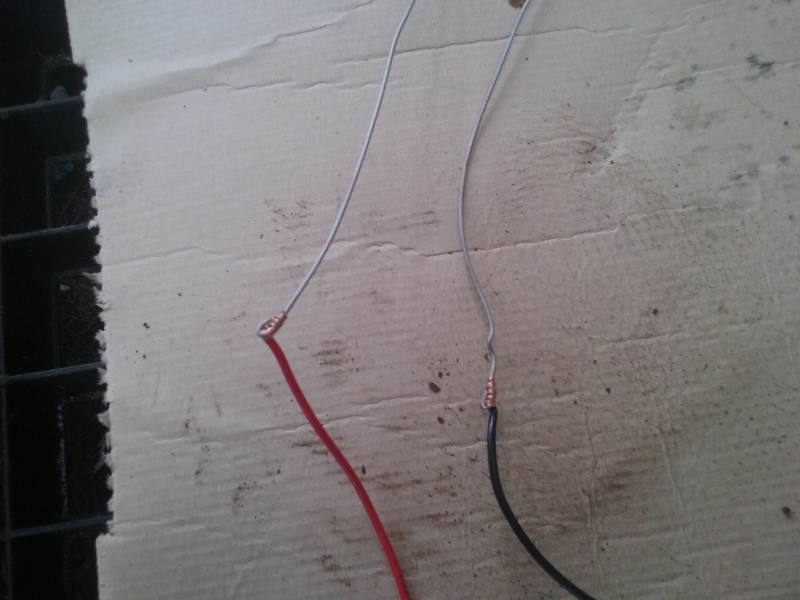
For this microbial fuel cell electrode design, I'm using a bindle of activated carbon packed tight with cloth and string with a short titanium wire inside that shouldn't corrode.
My design goals for microbial fuel cells are low cost, ease of assembly, longevity, and low material inputs. This design uses only some activated carbon, cloth, copper wire, and short lengths of titanium wire. Ideally this should be much less resource intensive than a solar/battery system as well as producing energy continuously with indirect solar capture through plant waste.

First, I took lengths of stranded copper wire and twisted it onto 30cm lengths of titanium wire. I don't know if you can even solder onto titanium but I didn't want to introduce even more combinations of metals that might induce a galvonic response. I want the geobacter colony to providing all the electricity for this cell.
To protect the copper wire from corrosion, I epoxied over the connection.
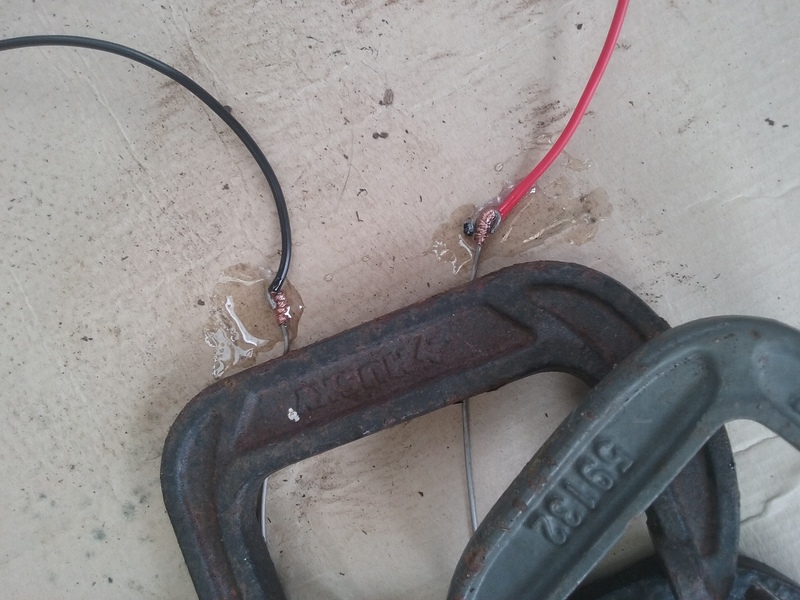
Once the epoxy dried, I bent the titanium lengths into a helix shape.
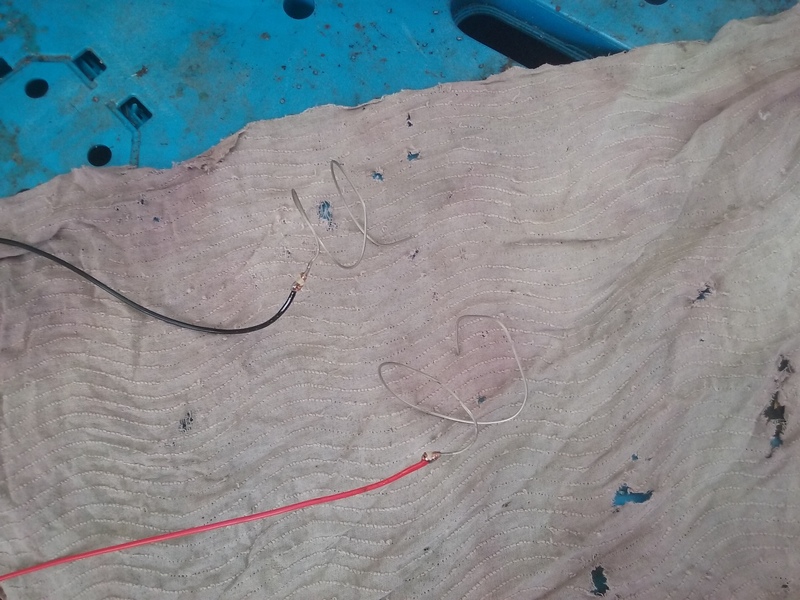
I cut squares from an old blanket and poured activated carbon around the helix in the middle.
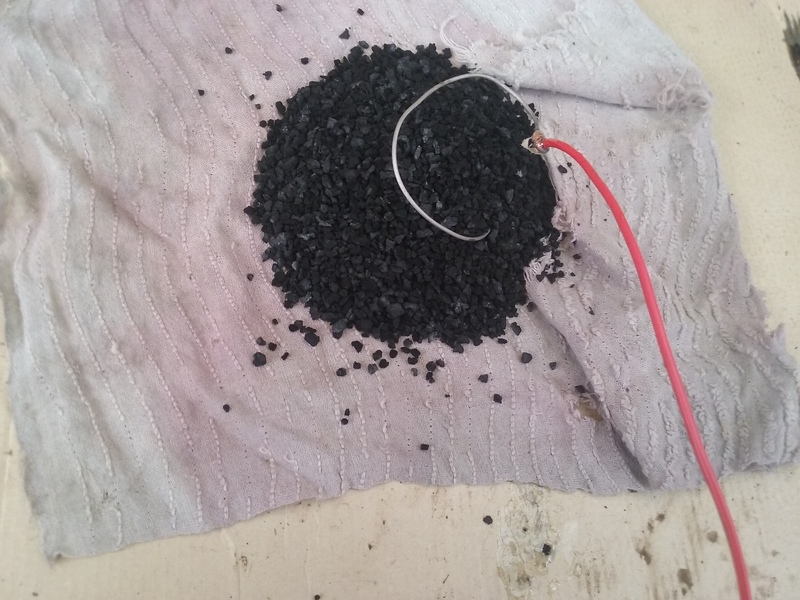
I folded up the edges to make a bindle tied off with string. The activated carbon is still loose in the bindle but I found through experiments with the multimeter that activated carbon is much more electrically conductive when compressed.
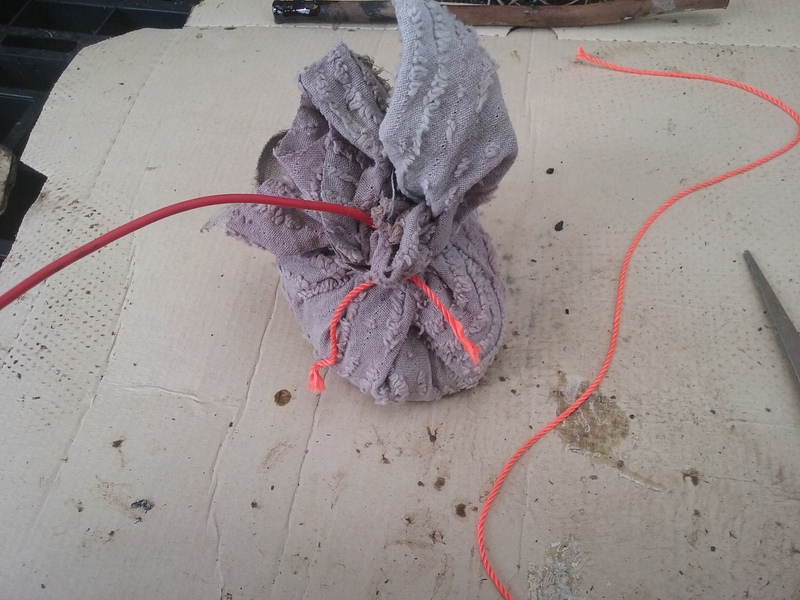
I placed another square of cloth around the bindle (there were some holes that the carbon was falling out of) and I packed the bindle tightly by wrapping string around to improve electrical conductivity.
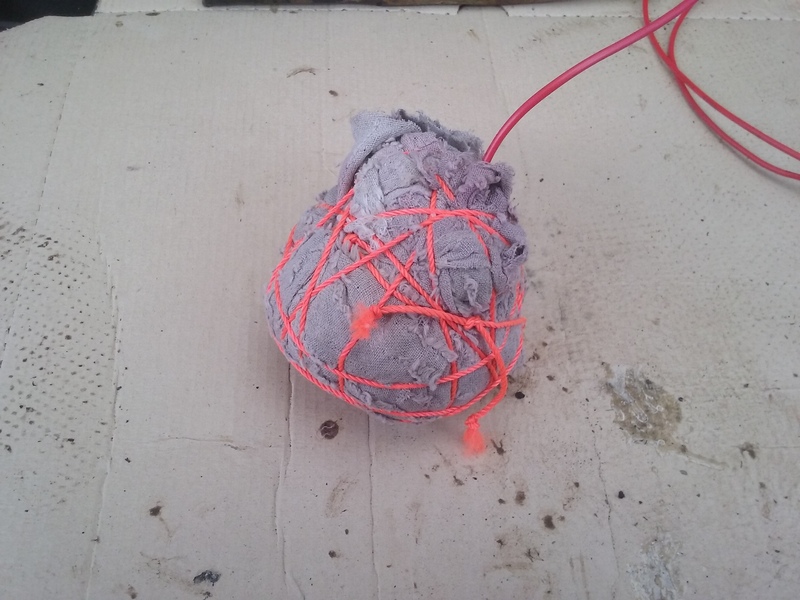
I made a second identical version since open single chamber microbial fuel cell designs like this need a cathode at the surface in contact with the air and one below buried in mud.
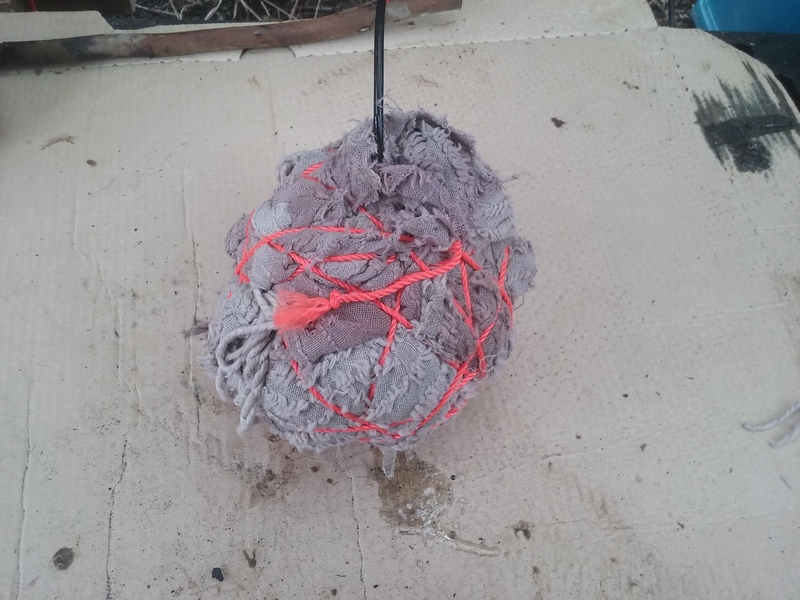
Beforehand, I prepped a pond environment in a kids pool with mud at the bottom and azolla and water spinach at the surface. I buried the anode and set the cathode on the surface to interface with the oxygen in the air.
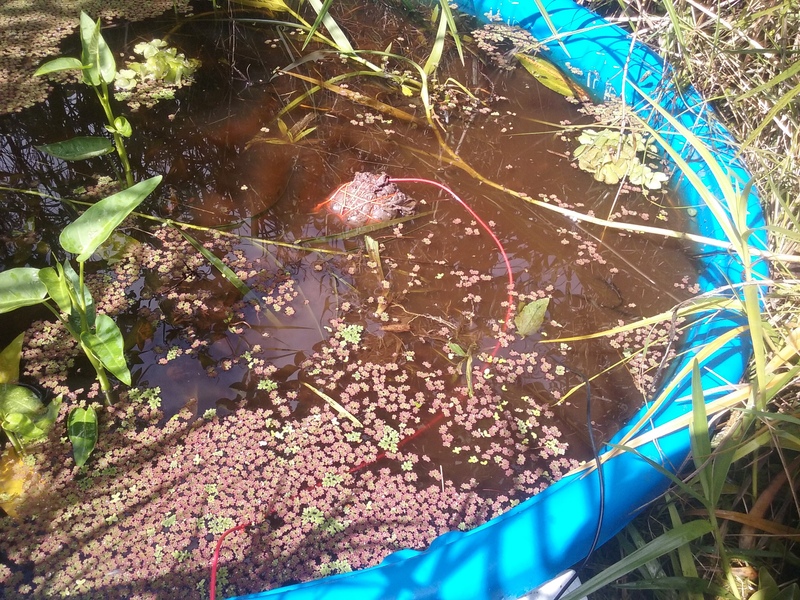
To get the reaction started with geobacter, I put a resistor across the wires.
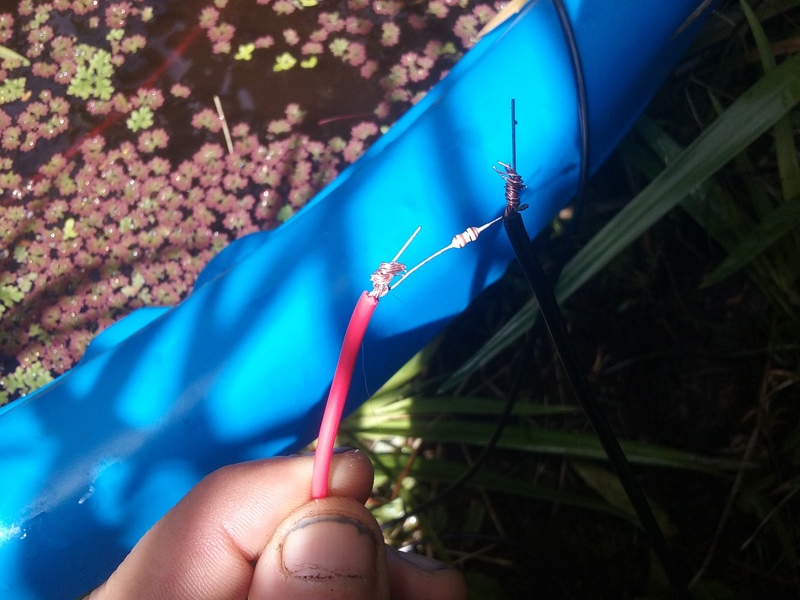
With both electrodes in the water, there is no voltage difference so presumably there is no or very low galvonic corrosion happening. So hopefully all the energy we get should be from the microbes.
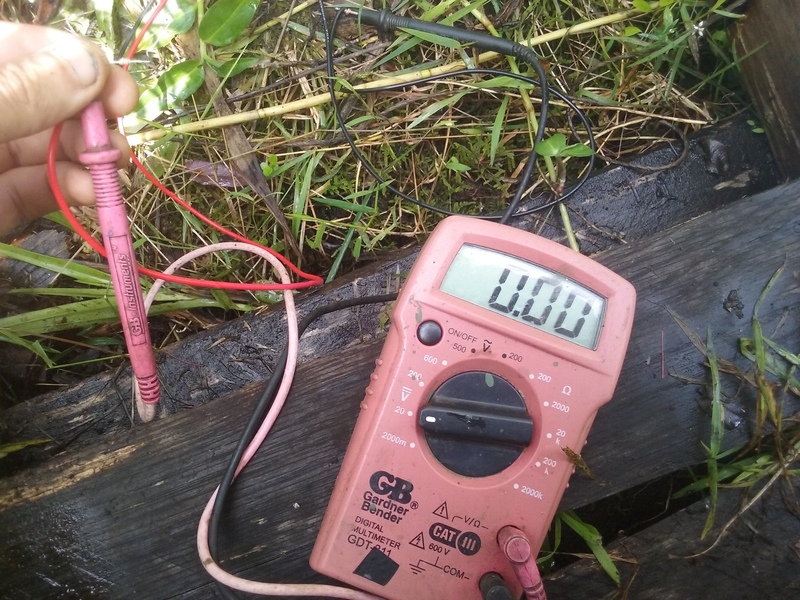
I'm going to check in on this experiment a few times per day to see what happens to the voltage. I will try to update this page with some results.